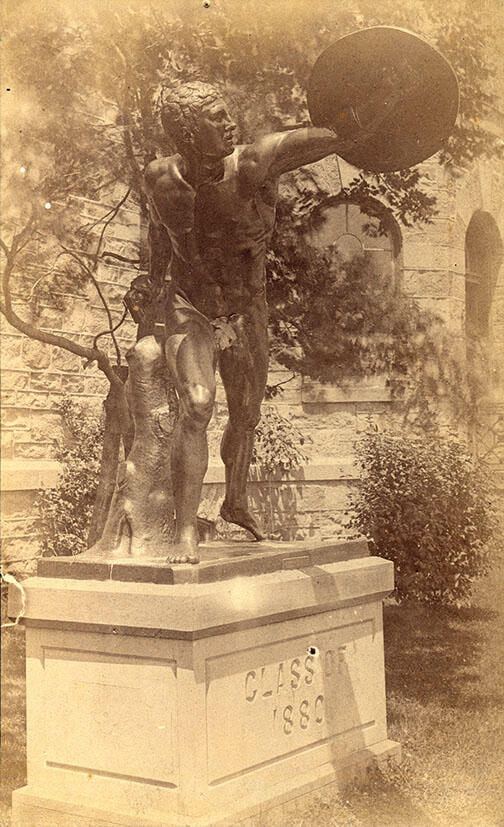Students crowded Murray Hall on Jan. 16, 1890, to hear New York anti-vice crusader Anthony Comstock fulminate against “the various temptations of young men.” Comstock was famous for finding indecency everywhere — so irreverent undergraduates glued natty red-flannel underwear to the nude Gladiator statue outside the gym, just prior to his arrival.
The graduating Class of 1880 had donated the Gladiator — a hollow copy of the Borghese Warrior from ancient Greece — hoping to outdo the Class of 1879, which gave two lions to flank the front steps at Nassau Hall. The lions survive today at Wilson College (replaced at Nassau Hall by tigers), but the Gladiator was doomed almost from the beginning. His sword and fig leaf soon were stolen, and many pranks left him worse for the wear.
“Is it not time to put a stop to the mutilation of the statue?” begged The Daily Princetonian in 1895. “It should be safe from the childish acts of would-be jokers.”
One morning in 1898, the janitor at Brokaw Memorial, the campus swimming facility, summoned proctor Bill Coan in horror: There was a drowned man at the bottom of the pool.
Coan fished out the Gladiator. Three days later he was startled to see a person atop Brown Hall, poised for a suicidal jump. “I climbed up through the skylight to the roof,” Coan recalled, “and with the assistance of my partner, lowered the 250 pounds of bronze to the ground.”
Once again he hid the peregrinating statue. Then, “to my amazement while I was going to the Williams-Princeton baseball game in May,” Coan remembered, “what should I see but the bronze Gladiator seated on the corner ... to the great amusement of the baseball fans.”
Thereafter the Greek warrior went straight to the town dump, an ignominious end to a brief career among Philistines.













No responses yet